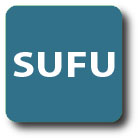LAS VEGAS, NV USA (UroToday.com) - The Study of Urgent® PC versus Sham Effectiveness in Treatment of Overactive Bladder Symptoms (SUmiT) was a double-blind, randomized, sham-controlled trial demonstrating the efficacy of PTNS in treating OAB. The purpose of this secondary analysis was to evaluate the potential differences in treatment efficacy based on demographic and baseline health factors, and to analyze the treatment effect after 6 and 12 interventions.
 Methods: 208 out of 220 enrolled in the SUmiT Trial were included in this per-protocol analysis. Potential differences in treatment efficacy were evaluated by age (< 65 years vs. ≥65 years), gender, history of OAB medication use, and baseline urge urinary incontinence (UUI). The differential effect of therapy after 6 and 12 interventions was also explored. Validated questionnaires and 3-day voiding diaries were used to analyze treatment efficacy.
Methods: 208 out of 220 enrolled in the SUmiT Trial were included in this per-protocol analysis. Potential differences in treatment efficacy were evaluated by age (< 65 years vs. ≥65 years), gender, history of OAB medication use, and baseline urge urinary incontinence (UUI). The differential effect of therapy after 6 and 12 interventions was also explored. Validated questionnaires and 3-day voiding diaries were used to analyze treatment efficacy.
Results: Among the 208, 79% were women, 48% were ≥65 years, 31% had previously been on OAB medication, and 79% reported baseline UUI. A differential effect of therapy on overall bladder symptoms was observed by gender in the sham group (p=0.03). While men and women experienced similar improvement in overall OAB symptoms in the PTNS group (68.2% vs 55.6%) the rate of improvement differed in men and women in the sham group (5% versus 26%) (Table 1). However, PTNS was superior to sham in both gender groups (both p < 0.001). Those in the PTNS group with baseline UUI showed a trend towards greater reduction in moderate/severe urgency compared to those without baseline UUI (p=0.07) (Table 2). No differences in efficacy were detected when results were stratified by age or history of OAB medication use. The percent of participants reporting ≥50% improvement in moderate to severe urgency after 12 interventions was 46% and 28% for the PTNS and sham groups, respectively (p=0.007). While, 47% of patients in the PTNS group and 34% in the sham group reported ≥50% improvement for accidents per day (p=0.07) (Figure 1). No significant improvements were reported after 6 interventions. However, overall OAB symptoms significantly improved from the 6th to 12th intervention in the PTNS group (p < 0.001), but not in the sham group (p=0.13) (Table 3).
Conclusion: This secondary analysis provides evidence that PTNS therapy is an effective OAB treatment in both men and women, regardless of age and prior use of OAB medications. Twelve weekly PTNS treatments are needed to realize the full treatment efficacy for those suffering with OAB.
Source of Funding: Uroplasty, Inc.
Presented by Kenneth M. Peters, MD and Donna J. Carrico, NP, MS at the Society for Urodynamics, Female Pelvic Medicine and Urogenital Reconstruction (SUFU) 2013 Winter Meeting - February 26 - March 2, 2013 - Caesars Palace - Las Vegas, NV USA
Beaumont Hospital, Royal Oak, MI USA
View Full SUFU 2013 Winter Meeting Coverage




